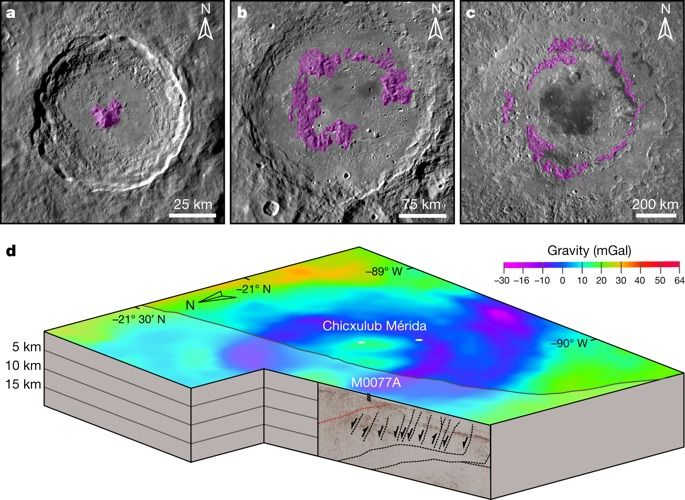Large meteorite impact structures on the terrestrial bodies of the Solar System contain pronounced topographic rings, which emerged from uplifted target (crustal) rocks within minutes of impact. To flow rapidly over large distances, these target rocks must have weakened drastically, but they subsequently regained sufficient strength to build and sustain topographic rings. The mechanisms of rock deformation that accomplish such extreme change in mechanical behaviour during cratering are largely unknown and have been debated for decades. Recent drilling of the approximately 200-km-diameter Chicxulub impact structure in Mexico has produced a record of brittle and viscous deformation within its peak-ring rocks. Here we show how catastrophic rock weakening upon impact is followed by an increase in rock strength that culminated in the formation of the peak ring during cratering. The observations point to quasi-continuous rock flow and hence acoustic fluidization as the dominant physical process controlling initial cratering, followed by increasingly localized faulting.
Read more
